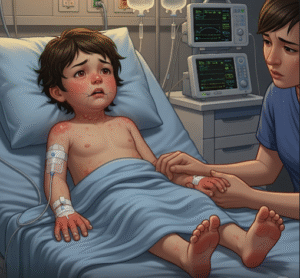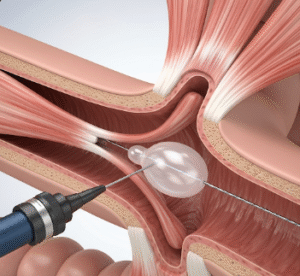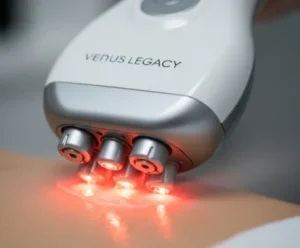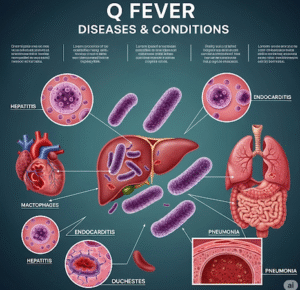Overview
Natal teeth are teeth that are present at birth, rather than emerging during the usual infancy timeline. These teeth are relatively rare, occurring in approximately 1 in every 2,000–3,000 births. Natal teeth are most often found in the lower front gums (mandibular incisors) and may vary in size, shape, and stability.
While many natal teeth are benign and do not require intervention, they can sometimes cause feeding difficulties, irritation, or risk of aspiration. In Korea, pediatric and dental specialists provide careful assessment and treatment to ensure the safety and oral health of newborns.
Key Facts
➤ Natal teeth are present at birth, whereas neonatal teeth appear within the first 30 days.
➤ Most natal teeth are mandibular incisors.
➤ They may be loose, small, or poorly developed.
➤ Rarely, natal teeth are associated with genetic syndromes or developmental conditions.
➤ In Korea, pediatric dentists and neonatologists collaborate for appropriate management.
What are Natal Teeth?
Natal teeth are fully or partially erupted teeth visible in a newborn’s mouth.
➔ They may vary in:
- Size – from normal infant tooth size to smaller, undersized teeth.
- Stability – some are firmly attached, while others are loosely rooted.
- Appearance – often conical, worn, or irregular in shape.
These teeth are different from early eruption of primary teeth, which usually occurs around 6 months of age.
Symptoms Related to Natal Teeth
➤ Visible teeth at birth.
➤ Irritation or soreness in the newborn’s tongue or mother’s nipple during breastfeeding.
➤ Feeding difficulties due to sharp edges or mobility of teeth.
➤ Rare bleeding or ulcers in the infant’s mouth.
➤ Possible looseness, increasing the risk of aspiration.
➤ In some cases, associated mild gum swelling around the teeth.
Causes / Possible Causes
The exact cause of natal teeth is not fully understood, but several factors may contribute:
Genetic Causes
➤ Family history of early tooth eruption.
➤ Certain syndromes such as Ellis-van Creveld, Hallermann-Streiff, or Pierre Robin.
Developmental Factors
➤ Accelerated development of the dental lamina in utero.
➤ Localized growth variations in the mandibular region.
Environmental Factors
➤ Maternal health and nutritional status during pregnancy may play a minor role.
Other Considerations
➤ Most natal teeth are isolated findings without systemic implications.
➤ Rarely, multiple natal teeth indicate underlying developmental syndromes.
Risk Factors
➤ Family history of early tooth eruption.
➤ Certain genetic syndromes linked to dental anomalies.
➤ Premature birth or low birth weight in some studies (though findings vary).
➤ Male infants may have a slightly higher occurrence rate.
Complications
While generally benign, natal teeth can lead to:
➤ Feeding problems due to discomfort during breastfeeding.
➤ Ulceration on the tongue (Riga-Fede disease).
➤ Risk of aspiration if teeth are very loose.
➤ Gum irritation or inflammation around the teeth.
➤ Psychological or cosmetic concerns for parents regarding early tooth appearance.
When Should I See My Doctor?
Consult a pediatrician or pediatric dentist if:
➤ Teeth appear very loose or unstable.
➤ Infant experiences difficulty feeding or pain during breastfeeding.
➤ Signs of ulcers or persistent irritation in the mouth.
➤ Multiple or unusually shaped natal teeth appear, suggesting a syndrome.
➤ Parents have concerns about safety or future dental development.
Care and Treatment
Lifestyle and Home Measures
➤ Monitor the stability and positioning of natal teeth.
➤ Maintain gentle oral hygiene for the infant.
➤ Use soft feeding techniques if breastfeeding causes pain.
➤ Apply cool teething gels or gentle massaging as recommended by a pediatric dentist.
Medical Treatments
➤ Observation is preferred if teeth are stable and cause no problems.
➤ Extraction may be necessary if:
- Teeth are very loose and pose an aspiration risk.
- Ulceration or feeding difficulty develops.
➤ Pediatric dentists may provide protective coverings or adjustments for sharp edges.
➤ Post-extraction care includes gentle oral cleaning and monitoring for healing.
Preventive Measures
➤ Routine check-ups with pediatric dentists during early infancy.
➤ Awareness of Riga-Fede disease to prevent tongue ulcers.
➤ Early assessment for associated syndromes if multiple or abnormal teeth are present.
Treatment Options in Korea
Korean healthcare offers specialized care for natal teeth through:
Diagnostic Services
➤ Clinical oral examination by pediatric dentists.
➤ Radiographs (if needed) to assess root formation and tooth stability.
➤ Genetic consultation for infants with multiple or abnormal natal teeth.
Therapies and Supportive Care
➤ Observation and monitoring for stable teeth.
➤ Extraction or reshaping of teeth that interfere with feeding or pose aspiration risks.
➤ Guidance for parents on safe breastfeeding and oral care.
➤ Integration of pediatric dentistry and neonatology to ensure safe management.
➤ Post-procedure care including infection prevention and healing support.
✅ In summary: Natal teeth are teeth present at birth, usually benign but occasionally associated with feeding difficulties, tongue ulcers, or aspiration risk. In Korea, careful pediatric dental evaluation and management ensures infant safety, addresses complications, and monitors overall dental development while providing reassurance and guidance to parents.













